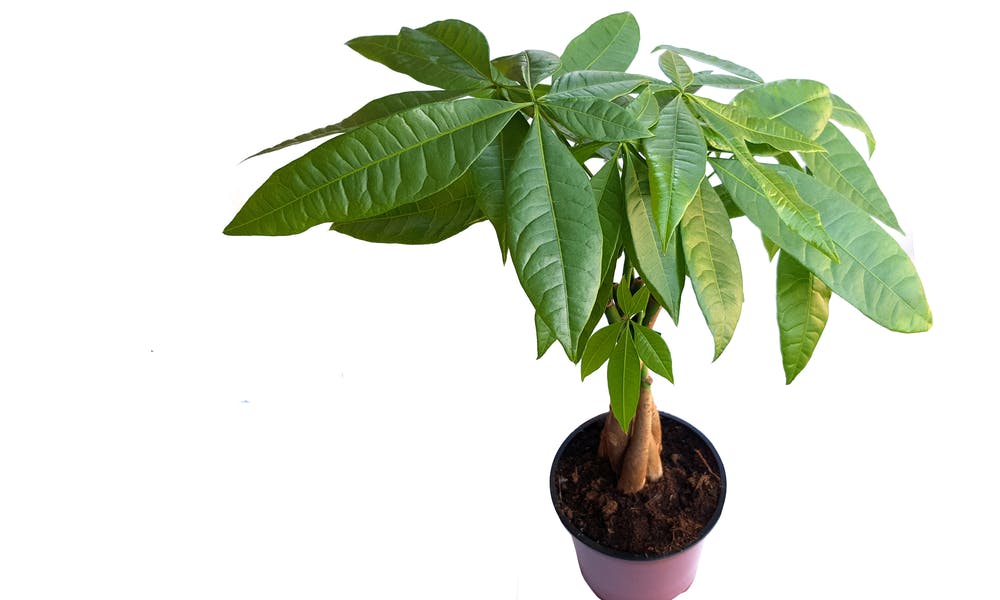MENU
Money Tree Care – All You Need to Know

Each of us wants an intimate space enriched from time to time with a bit of greenery. There is nothing easier than a money tree to add a little animation to your space. The money tree is a unique and extraordinarily beautiful plant. It has a deep symbolism that is hard to describe in words; it is said that if these plants thrive in your home, your home thrives itself. By reading the following sections, you can discover:
* The origins and history of the money tree
* What is the money tree
* How to grow the money tree
* How to care of the money tree
* The benefits of the money tree
The Origins and History of The Money Tree
The money tree is a tropical plant, believed to bring good luck and financial wealth to its owner. Money trees are sturdy plants, very easy to care for, extremely attractive and, if they do not bring you money in the house, surely these lush plants bring a splash of color.
In general, money trees are considered a symbol of luck and prosperity, dating back a few centuries. Despite this, the Pachira plant, or the money plant, was actually popularized in the 1980s. A man braided the plant in its early stage and discovered that the Pachira tree continued to grow following the same pattern.
It is believed that the braided stems of the money tree bring wealth to the owner of this plant. These stems are often sold for their beauty. Typically, a stem has five leaves that are associated with the five fundamental elements: earth, water, fire, wind, and metal. If you find a plant with a seven-leaf stalk, you are really lucky.
What Is the Money Tree?
The money tree, commonly known as Pachira Aquatica and also known as Malabar chestnut or Guyana chestnut, is native to the wetlands of Central America. The leaves are lobed and have the appearance of hands, with five fingers.
The vivid green leaves need relatively low watering. The money tree can grow up to 60 feet tall in its natural habitat in Central and South America, as opposed to the one grown indoors, in pots that can reach a maximum of 3 to 6 feet.
As briefly mentioned, the braided logs are not a native feature. They are formed so by the horticulture enthusiasts who grow them small, in pots. They start to weave the stems since they are still quite fragile and soft. Over time the stems develop in this position and they become woody. The mature braided trunks are of real beauty.
How to Grow the Money Three
Money trees grow in a light that is a fine blend of direct and indirect sunlight. The leaves of this plant can be withered by strong sun, so an ideal balanced environment is obtained, from time to time, by rotating the plant. Thus, the light is evenly distributed. It should not be moved out of place, but it has to be only rotated. Money trees can thrive in fluorescent lighting if you take care of them.
Money trees should be watered with a generous amount of water, every two weeks. When you see that the soil is dried, you should water the plant. They like warm environments with temperatures between 65- and 75-degrees Fahrenheit. They are resistant plants and can manage temperatures below 10 degrees Fahrenheit. These plants like humidity. Thus, it is ideal to place the plant on a tray with pebbles. In winter, this has the role of increasing humidity, especially when the plant is inside your house and the atmosphere in the house may be drier than usual.
Money trees are lovers of direct light, grow well in such light, and grow almost as well in shady conditions. The trickiest part of growing a money tree is perhaps finding the right balance between sunlight and shade; a quick trick is to keep rotating the money tree if the sunlight is too strong.
How to Care for The Money Tree
Most problems in taking care of money trees arise from the surplus of direct light and the surplus of water. Although they like the bright light, you should protect them from such light, otherwise their leaves wilt.
To avoid root rot, a money tree needs sandy peat soil. The pot in which it is planted is very important. It must have very good drainage, holes through which the water in excess can be drained and avoid root rot. Watering should be done when the crown is already at 2 to 4 inches above the soil and this soil is dry. During the growing season, the plant needs nutrients. As a result, fertilize the soil with 50% liquid fertilizer during the grass time.
Like most home plants, money trees require regular cutting to keep their growth smooth and beautiful. First of all, you should remove the dead or damaged leaves. Then, you should cut exactly at the knots using gardening scissors that have to be well sharpened. This way, you can get the classic, round shape. If you want to let the plant grow, you can only adjust the new shape, to keep the money tree at a proper dimension for your house. The money plant can grow in a container full of water without any soil if you change the water from time to time.
The Benefits of The Money Tree
The money tree is considered one of the best plants for the purification of air for reducing anxiety, stress, and sleep disorders. Additionally, experts recommend placing the money plant near your computer, TV or Wi-Fi router.

